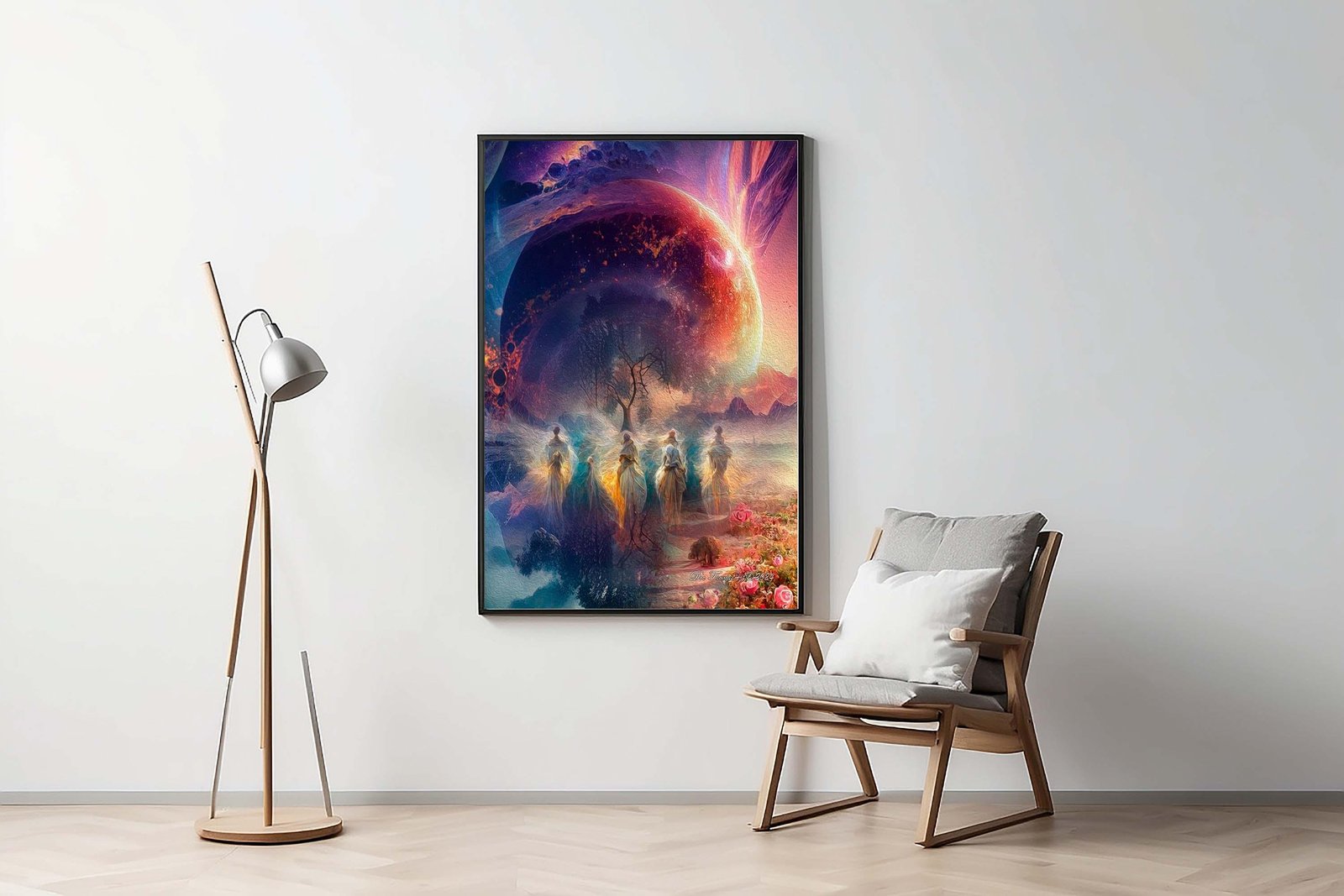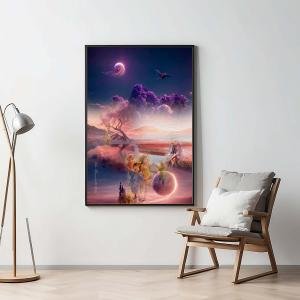The March Beyond the Sun
In this ethereal artwork, figures draped in light walk in unison toward a horizon where worlds collide — a massive planet looms, its fiery edges a stark contrast to the serene roses blooming on the ground. The landscape is surreal, bathed in the glow of celestial light. These figures, seemingly spirits, move together, heading toward a single tree, bare and standing under the shadow of the cosmos. The sky bursts with colors, blending purple, pink, and orange in a dance of creation and destruction. The world is both beautiful and fleeting, echoing with the cycles of life and death.
Please see Below for Details…
Hotline Order:
Mon - Fri: 07AM - 06PM
404-872-4663
The imagery directly connects to Ecclesiastes 9:3: "This is an evil among all things that are done under the sun, that there is one event unto all: yea, also the heart of the sons of men is full of evil, and madness is in their heart while they live, and after that they go to the dead." The figures walking through this dreamlike field symbolize humanity's march toward mortality. No matter how vivid or extraordinary the world, it is marred by the reality that death is inevitable, that all paths lead to the same conclusion. The figures are filled with the brilliance of life, but their destination — the single barren tree — represents the starkness of death. The cosmic backdrop emphasizes how small and insignificant the human journey can seem in the grand design of the universe, yet it is a journey we all must make.
In Ecclesiastes 9:4, it says, "For to him that is joined to all the living there is hope: for a living dog is better than a dead lion." The radiant roses in the foreground symbolize this fleeting hope and beauty in life. Despite the impending doom of death, as shown by the looming planet and darkening sky, the present moment offers its own rewards. The life in the flowers and the spirits still walking suggests that there is beauty in the mere fact of being alive, even though death overshadows it all.
Ecclesiastes 9:5-6 echoes this theme further: "For the living know that they shall die: but the dead know not any thing, neither have they any more a reward; for the memory of them is forgotten." The swirling sky and the faded figures illustrate this truth — the dead fade away into the cosmos, their influence forgotten, their emotions and struggles wiped away. The vibrant and colorful planet represents life, the vibrancy of emotions like love, hate, and envy that drive us during our short time under the sun. Yet, as the verse suggests, "their love, and their hatred, and their envy, is now perished." This cosmic stage reminds us that our lives, our joys, and our pains, are as fleeting and impermanent as the stars above.
These verses from Ecclesiastes and the artwork together remind us of the importance of cherishing the present. The acknowledgment that death comes to all can lead us to appreciate the beauty of life more deeply. The phrase "a living dog is better than a dead lion" suggests that even a modest life is better than none, and we should not take the gift of life for granted. The cosmic imagery of the universe and the walking spirits remind us of the vastness of existence and how small our time on Earth is in comparison.
In a modern context, where people are constantly seeking meaning and purpose in material gains or emotions like envy and hatred, this artwork and its connected scripture offer a different perspective. It encourages us to focus on the intrinsic value of being alive and the small, beautiful things we experience every day. It teaches us that while the journey may be filled with darkness and uncertainty, there is always hope in life, in the simple act of walking forward, in the beauty of the moment we are given, under the sun.
Add your review
Your email address will not be published. Required fields are marked *
Please login to write review!
Looks like there are no reviews yet.








